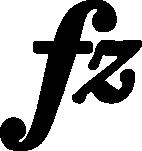



According to us, it is highly likely that in FE (→GE,EE) the engraver omitted the letter 'z' in the dynamic marking. It is supported by the following arguments:
-
Chopin wrote
 in AI,
in AI, -
 is indicated just before, at the beginning of the piece,
is indicated just before, at the beginning of the piece, -
in the Etudes many
 marks were omitted in FE (e.g., in the Etude in G
marks were omitted in FE (e.g., in the Etude in G major, No. 5, bar 32, F minor, No. 9, bar 4) or replaced with
major, No. 5, bar 32, F minor, No. 9, bar 4) or replaced with  (e.g., in bar 16 and 26, as well as in the Etude in A minor, No. 2, bar 12, E
(e.g., in bar 16 and 26, as well as in the Etude in A minor, No. 2, bar 12, E minor, No. 6, bars 21 and 32, C minor, No. 12, bar 37),
minor, No. 6, bars 21 and 32, C minor, No. 12, bar 37), -
there is no reason to question the authenticity of
 , as immediately afterwards, the crescendo leading to
, as immediately afterwards, the crescendo leading to  in bar 4 starts,
in bar 4 starts, -
the

 combination is very rare in Chopin's pieces, contrary to
combination is very rare in Chopin's pieces, contrary to 
 , which we can often see in the autographs, as, e.g., in the Etude in E
, which we can often see in the autographs, as, e.g., in the Etude in E major, No. 11, bars 17-25.
major, No. 11, bars 17-25.
The presence of  in FE (→GE,EE) is the first signal of clarifying the notation of dynamic indications in the course of maturing of the Etude, and probably also of a certain change of the concept of first several bars of the piece. The dynamics indicated in the editions is more changeable (
in FE (→GE,EE) is the first signal of clarifying the notation of dynamic indications in the course of maturing of the Etude, and probably also of a certain change of the concept of first several bars of the piece. The dynamics indicated in the editions is more changeable ( in bar 1 and 8), at less absolute intensity (lack of
in bar 1 and 8), at less absolute intensity (lack of  in bars 7 and 12), as a result of which it contributes to a better plasticity both locally and in the Etude as a whole.
in bars 7 and 12), as a result of which it contributes to a better plasticity both locally and in the Etude as a whole.
Compare the passage in the sources »
category imprint: Differences between sources
issues: Inaccuracies in FE, fz – f
notation: Verbal indications



